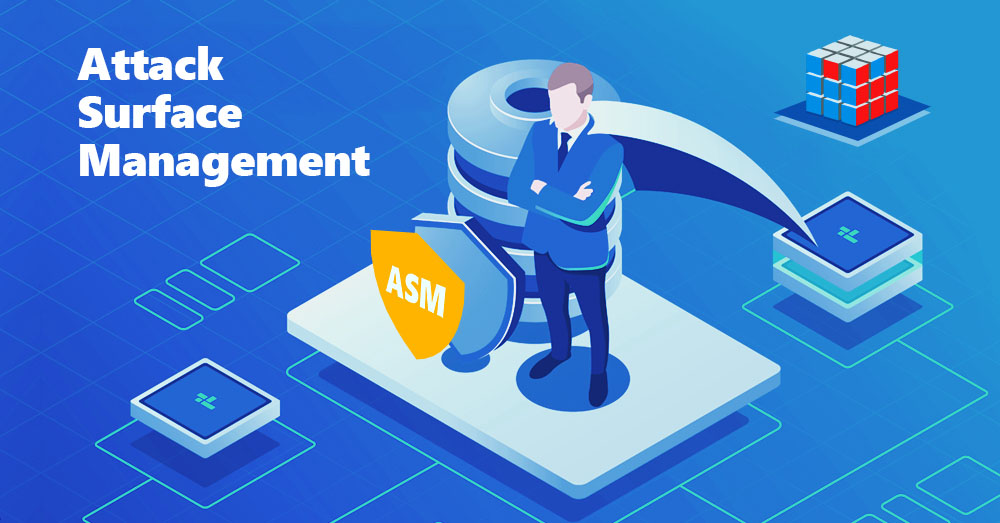Attack Surface Management (ASM) is an essential component of any organization’s cybersecurity strategy. ASM involves the continuous monitoring, discovery, inventory, classification, and prioritization of sensitive external assets within an IT organization’s infrastructure. It’s a proactive approach to identifying potential attack vectors that could be used to infiltrate your network.
As attacks become increasingly sophisticated, it’s important to deploy an effective attack surface management solution to monitor and protect your organization from these threats. Attack surface management vendors offer a variety of solutions designed to protect against data breaches and other malicious activity.
When selecting an attack surface management vendor for your organization, it’s important to consider its features and capabilities. Many vendors provide continuous monitoring of workstations, laptops, network file servers, application servers, corporate firewalls & switches, multi-function printers, and mobile devices. This helps ensure all devices are kept secure and up-to-date with the latest security patches and configurations.
Other ASM vendors provide data leak detection capabilities that help detect any accidental or intentional data exfiltration attempts. This is especially important in today’s digital world where data is often stored in the cloud and can be accessed by anyone with the right credentials.
Finally, some ASM vendors offer additional features such as automated patching processes which can help reduce the time spent manually updating systems with security fixes. This can significantly reduce the amount of time needed for manual patching activities which helps improve overall system security posture.
When it comes to choosing the best attack surface management vendor for your organization’s needs, it’s important to take into account your specific requirements such as budget constraints and scope of coverage for different types of assets within your environment. Ultimately, choosing an ASM vendor that fits your needs will help you maintain secure IT infrastructure and reduce the risk of a data breach or malicious activity targeting your company’s assets.

Attack Surface Management Solutions
UpGuard is an attack surface management product that provides organizations and their vendors with continuous attack surface monitoring and data leak detection. The platform offers complete attack surface protection by scanning for misconfigurations and vulnerabilities that could lead to data breaches. With the help of its agentless technology, UpGuard can scan hundreds of thousands of assets in minutes, ensuring quick identification and resolution of potential risks. Additionally, the platform is able to identify third-party risks by scanning publicly available information such as open ports, server security configurations, and more. This helps organizations ensure they are monitoring their vendors’ attack surfaces as well as their own.
Attack Surface Management: An Overview
Attack surface management (ASM) is a comprehensive approach to continuously identify, assess, and reduce the attack surface of an organization. It involves proactively discovering and monitoring all potential attack vectors, or entry points, that can be exploited by malicious actors in order to gain access to corporate networks and data. The goal is to reduce the number of exploitable vulnerabilities or attack vectors within an organization’s environment, making it more difficult for malicious actors to successfully launch an attack.
ASM is a proactive process that combines vulnerability scanning, security assessments, penetration testing, remediation plans, application security testing, and risk analysis into a unified strategy that helps organizations identify their most critical security risks. This approach helps IT teams develop and maintain a secure infrastructure while ensuring compliance with industry standards and regulations. By reducing the number of potential entry points into an organization’s network, ASM reduces the chance of a successful cyberattack.
Understanding the Attack Surface in Cyber Security
An attack surface in cyber security is the external boundary of a system, system element, or environment where an attacker can attempt to gain unauthorized access. The attack surface includes any entry points that could be exploited by an attacker to gain access to the system, system element, or environment and any data or other resources that could be manipulated or stolen. Attack surfaces can include hardware interfaces and protocols, software interfaces and services, user accounts, and data stored within the system. By understanding the attack surface of a system, organizations can take steps to mitigate potential risks associated with unauthorized access. Additionally, security teams can use this information to develop effective security strategies for their organization.
Understanding the Difference Between Attack Surface and Vulnerability
Attack surface vs vulnerability management is a comparison of two different IT security disciplines. Attack surface management is an approach to identifying, assessing, and monitoring the external assets and cybersecurity threats affecting them. This is done to provide a holistic view of an organization’s infrastructure and how it can be exposed to cyberattacks. Vulnerability management, on the other hand, focuses on identifying, classifying, prioritizing, and remediating vulnerabilities in a network or system that can be potentially exploited by attackers. It involves scanning for known vulnerabilities, patching any weaknesses that are identified, and ensuring that systems are kept up-to-date with the latest security patches. While both attack surface and vulnerability management are important parts of any IT security strategy, they take different approaches to achieving similar goals of reducing risk and improving security posture.
Conclusion
Attack Surface Management (ASM) vendors can provide organizations with a comprehensive solution for detecting, analyzing, and remediating cyber vulnerabilities and potential attack vectors. ASM solutions are designed to monitor an organization’s entire attack surface, from workstations to mobile devices, and identify potential risks before they become security breaches. By leveraging the latest technologies in attack surface management, organizations can reduce the risk of data loss or damage caused by cyber threats.













